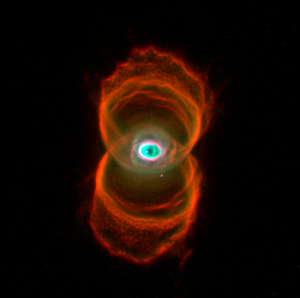Thanks to a comment left by Dragly on my original ChemSketch post in January, I can now reliably use ChemSketch on Linux.
ChemSketch is a Windows program, so I have to use Wine in order to run ChemSketch. The problem was that ChemSketch would run fine the first time it is started after installation, but every other time I tried to run the program it would hang-up without the ChemSketch window ever appearing.
Dragly's comment referred me to:
http://markmail.org/message/grddjlgsn3dh5kqpAnd he also pointed out that the program could be run with the window maximized by using this command, provided that the file path to the program is correct:
wine start /MAX C:\\WINDOWS\\TEMP\\ACDFREE12\\CHEMSK.EXEThis works, but it behaves a bit flakey for me running Ubuntu 10.04 and Wine 1.1.42. First the ACD/Lab Products panel appears (very slowly) - after clicking the "OK" button, the program itself loads on the workspace to the right of the one I am working on. The 3D View program behaves the same way - you need to use:
wine start /MAX C:\\WINDOWS\\TEMP\\ACDFREE12\\SHOW3D.EXEto get it to open normally, and then it shifts one workspace to the right.
After digging around a bit, it turns out that the problem is in the Wine registry file, which for me is at
/home/steve/.wine/user.regThis file is updated every time you close a program that is running under Wine. The quick and dirty solution would be to delete this file before running ChemSketch. Except for losing all the settings for every program you run with Wine, this works pretty well. The program starts normally - if a bit slowly compared to Windows.
The clever thing to do would be to edit user.reg to delete the offending setting, which starts with
[Software\\Advanced Chemistry Development (ACD)\\Size]and is followed by a bunch of numbers. Deleting this setting allows you to run ChemSketch and the 3DViewer "normally." This is a bit tedious but do-able. To be really clever I should write a program to do it for me every time I run ChemSketch.
Under Windows, you can open the 3DViewer from ChemSketch by using the ACD/Labs menu. Unfortunately, when I run under Linux, this menu does not have any of the labels visible. The first menu item is the 3DViewer. Or you can right-click the ACD/Labs icon in the Gnome panel at the top of the screen and select the 3D Viewer to open it.
Copying between the ChemSketch and 3D Viewer windows works, and so do the Database search options. The only remaining problem is getting the figure into an Open Office document. You can't simply copy the image, nor can you insert an OLE object the way you would in Windows. Instead you will need to save the figure as an image and import the image into the Open Office document. The downsides of this are adding an extra step to save the image, and not being able to edit the image easily unless you also saved the original ChemSketch file.










